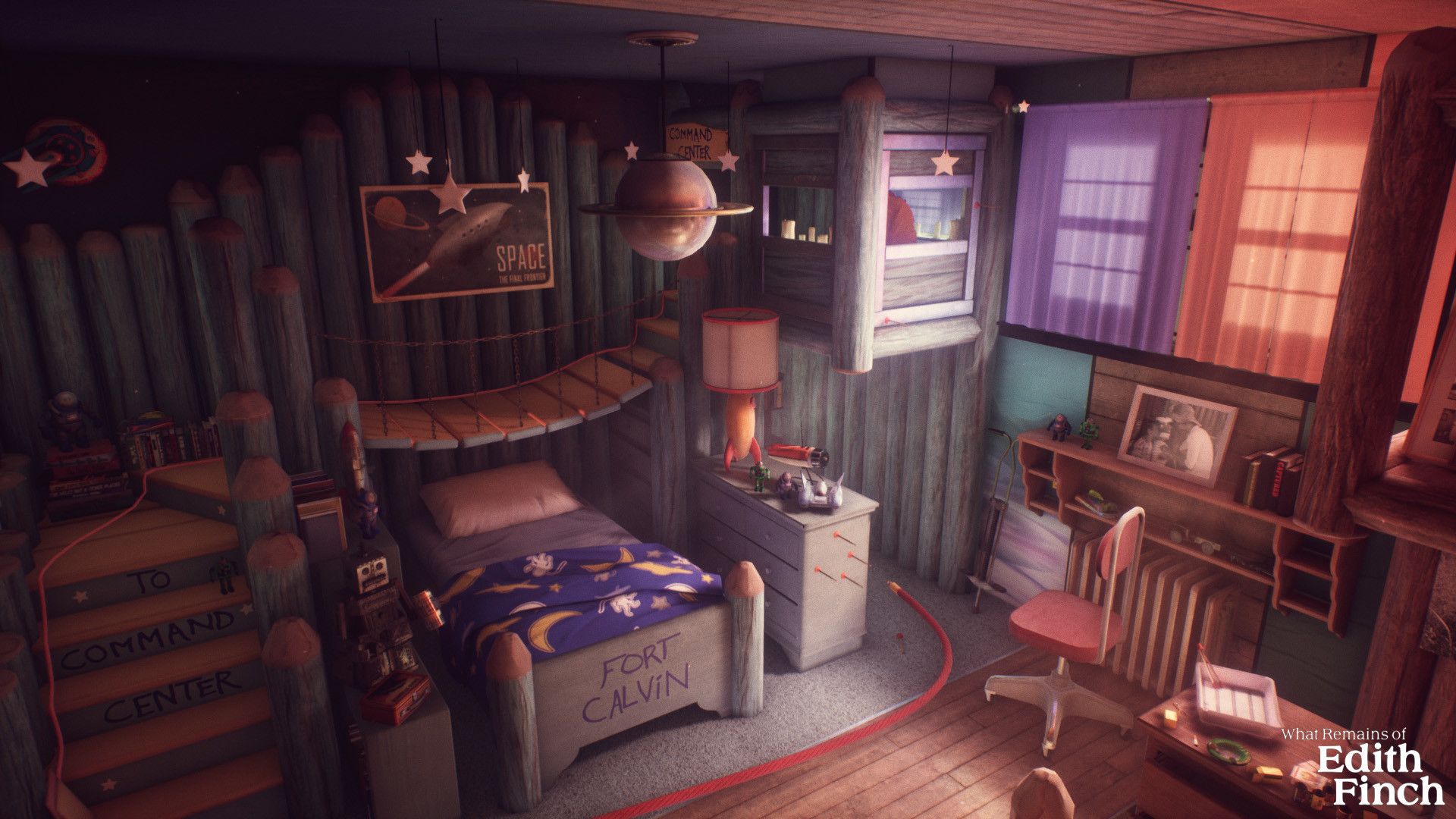“What Remains of Edith Finch,” developed by Giant Sparrow, is a deeply emotional, walking simulator that stands out to me in my experience of video games. It is a single-player video game and is quickly clear from the opening scenes that its roots are planted firmly in its storytelling. The story of the player’s experience unfolds at a pace dictated by their movement, exploring the Finch family’s lives through a maze of interconnected short stories that immerse the player in sensation, fantasy, and narrative gameplay. The game balances player and narrative progression, increasingly willing the player down the path of discovery.
The game’s walking simulator mechanics lend a sense of intimacy and connection to the story. It does not force the player forward but rather wills them forward by piquing their curiosity and inducing a sense of attachment to the characters. By granting the player freedom to explore the environment at their own pace, the game fosters a sense of discovery and immersion that is rarely found in more action-oriented titles. Interactive elements like puzzles, mini-games, and interactive page-turning keep you engaged, while the aesthetics are what truly pull you in. They enrich the experience through delicate sound design and beautiful visuals. The aesthetics, combined with the forcibly slow pace of movement, encourage you to stop often and take in your surroundings – a stark contrast to the more fast-paced games that often fill young gamers’ digital libraries.
However, I felt like the game’s storytelling was somewhat linear and left me frustrated in the moments when I wasn’t immediately able to find the next thing to do. As such, although the game is free in the way you move around, the experience can feel constrained at times. Narrative paths that differ based on the order you discover things could help with replayability.
Compared to other walking simulators, “What Remains of Edith Finch” distinguishes itself through its deeply emotional and engaging narrative. It is dark without being too difficult to play, which I’ve found hard to come by. The game’s focus on the subtle willfulness of player movement, rather than forced progression, creates a uniquely immersive experience that, for the most part, keeps the game feeling player-driven. However, it is perhaps my lack of experience with walking simulators that leaves this impression when, in reality, they might all be like this.
To me, “What Remains of Edith Finch” is a worthy example of a walking simulator, using the power of player movement to tell an emotional and engaging story. The game’s narrative progression, unique storytelling mechanics, and atmospheric design make it an excellent, well-rounded experience. Though it feels like there is room for improvement in terms of replayability, the game is a testament to the power and potential of interactive storytelling.




